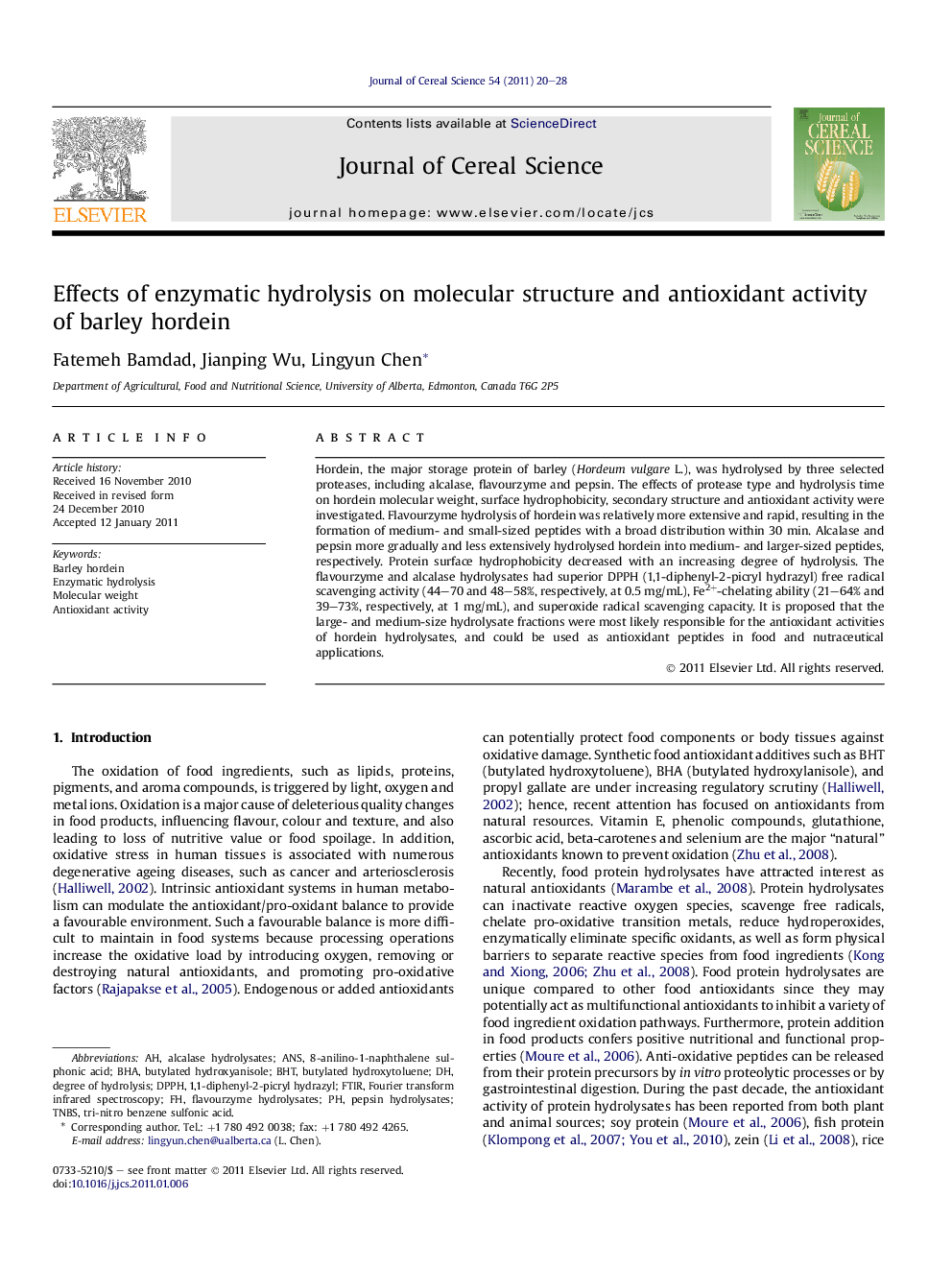| Article ID | Journal | Published Year | Pages | File Type |
|---|---|---|---|---|
| 4516175 | Journal of Cereal Science | 2011 | 9 Pages |
Hordein, the major storage protein of barley (Hordeum vulgare L.), was hydrolysed by three selected proteases, including alcalase, flavourzyme and pepsin. The effects of protease type and hydrolysis time on hordein molecular weight, surface hydrophobicity, secondary structure and antioxidant activity were investigated. Flavourzyme hydrolysis of hordein was relatively more extensive and rapid, resulting in the formation of medium- and small-sized peptides with a broad distribution within 30 min. Alcalase and pepsin more gradually and less extensively hydrolysed hordein into medium- and larger-sized peptides, respectively. Protein surface hydrophobicity decreased with an increasing degree of hydrolysis. The flavourzyme and alcalase hydrolysates had superior DPPH (1,1-diphenyl-2-picryl hydrazyl) free radical scavenging activity (44–70 and 48–58%, respectively, at 0.5 mg/mL), Fe2+-chelating ability (21–64% and 39–73%, respectively, at 1 mg/mL), and superoxide radical scavenging capacity. It is proposed that the large- and medium-size hydrolysate fractions were most likely responsible for the antioxidant activities of hordein hydrolysates, and could be used as antioxidant peptides in food and nutraceutical applications.
